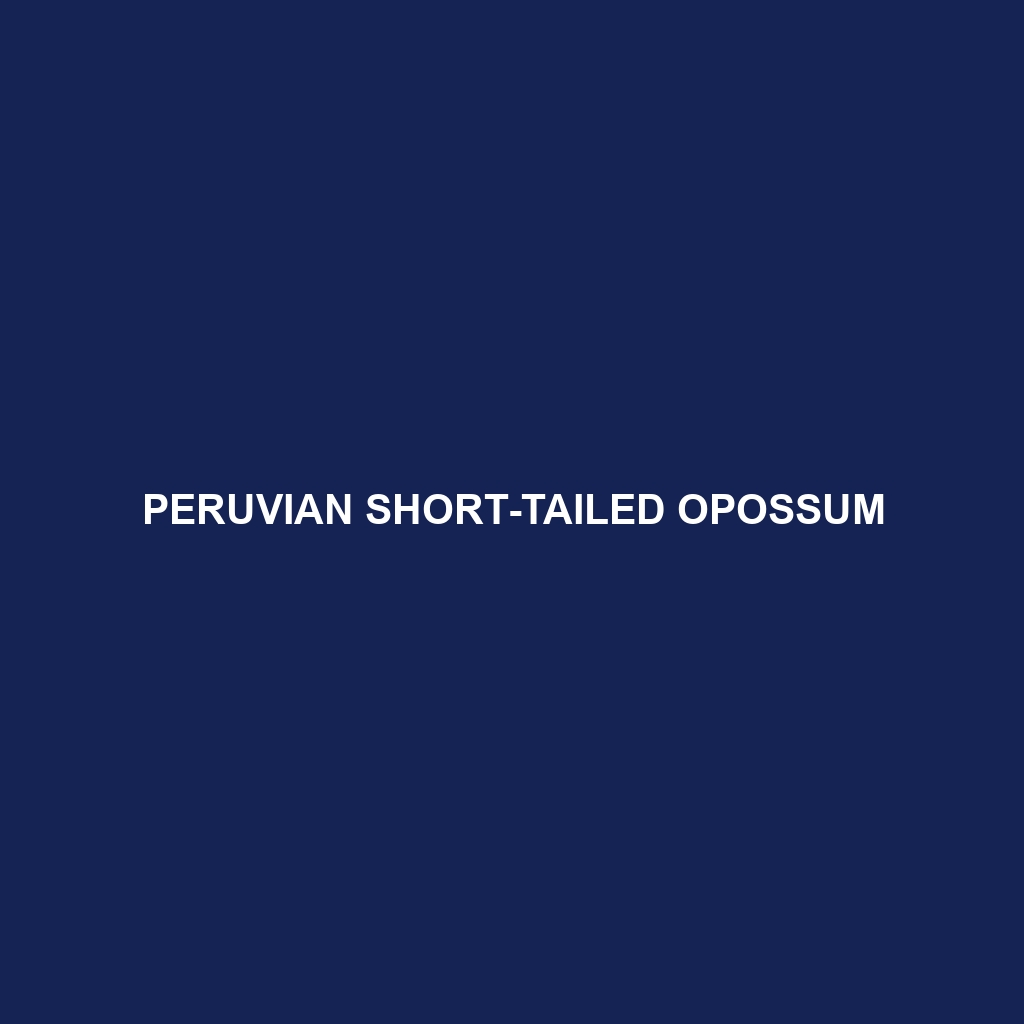Long-Nosed Short-Tailed Opossum: An In-Depth Profile
The Long-Nosed Short-Tailed Opossum (Monodelphis domestica) is a small, nocturnal marsupial native to South America. Known for its distinctively elongated snout and short tail, this unique creature is a fascinating subject of study due to its diverse range of behaviors and adaptability to various environments.
Physical Characteristics
Size: Adults typically measure between 10-14 cm (4-5.5 inches) in body length, with a tail that is significantly shorter, around 4-7 cm (1.5-2.7 inches).
Coloration: The fur of the Long-Nosed Short-Tailed Opossum varies from brownish-gray to reddish-brown on the dorsal side, while the ventral side tends to be lighter, often white or cream-colored.
Special Features: As the name suggests, this opossum has a notably long and pointed nose, which aids in foraging. The tail is prehensile to a limited extent, primarily used for balance rather than grasping.
Behaviors
Social Interactions: Generally solitary animals, Long-Nosed Short-Tailed Opossums tend to come together only for mating purposes. They are known to mark their territory with scent glands.
Feeding Habits: Omnivorous by nature, their diet includes a variety of insects, small vertebrates, fruits, and seeds. Their elongated snout and sharp teeth are well-adapted for hunting and consuming a diverse diet.
Ecological Roles: These opossums contribute to their ecosystem by controlling insect populations and dispersing seeds through their foraging activities.
Habitats
Natural Habitats: The species thrives in a range of environments, from tropical rainforests to dry shrublands. They are particularly adaptable and can often be found in secondary forests and even human-altered landscapes.
Shelter: During the day, they seek refuge in burrows, crevices, or dense vegetation to avoid predators and harsh weather conditions.
Adaptations
Nocturnal Lifestyle: Being active at night helps them avoid many predators and exploit different food resources.
Physical Adaptations: Their keen sense of smell and sharp claws are perfect for foraging, while their dense fur provides protection against the elements.
Reproductive Adaptations: Females have a short gestation period of about 14 days, with the young being carried in a pouch-like fold of skin until they are developed enough to cling to the mother’s fur.
Conservation Status
While the exact conservation status of the Long-Nosed Short-Tailed Opossum is not well-documented, it is not currently considered to be at significant risk. However, habitat destruction and environmental changes could potentially impact their populations.
Fascinating Fun Facts
Scientific Significance: Monodelphis domestica is the first marsupial to have its genome sequenced, providing valuable insights into mammalian genetics and evolution.
Unique Reproduction: Unlike many other marsupials, females of this species do not have a true pouch. Instead, the young cling to the teats and are covered by a protective fold of skin.
Adaptability: These opossums are highly adaptable and can survive in a variety of altered landscapes, showcasing their remarkable resilience.
The Long-Nosed Short-Tailed Opossum is a remarkable example of nature’s adaptability and evolutionary diversity. Its unique characteristics and behaviors make it an intriguing subject for both scientific study and casual observation. Whether you’re a wildlife enthusiast or a researcher, this fascinating marsupial offers plenty to marvel at.
